How Can Amazon vs Shopify Scraping Transform E-Commerce Growth With 35% More Accuracy?
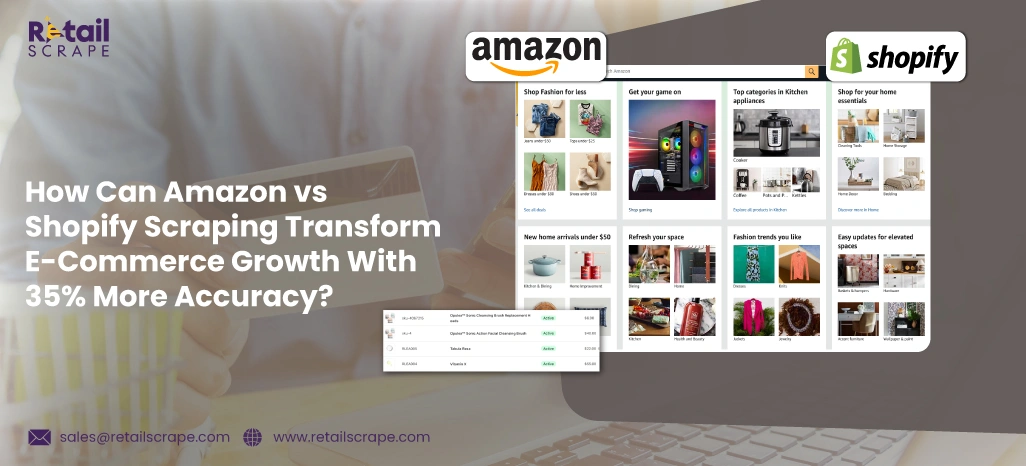
Introduction
In today’s competitive online retail space, businesses rely heavily on E-Commerce Data Scraping to keep pace with rapid market changes. Platforms like Amazon and Shopify are central to shaping the future of online sales, but each brings unique opportunities and challenges. Amazon, as a global marketplace, offers unparalleled volume and customer reach, while Shopify empowers individual brands and sellers with customization and independence.
This is where Amazon vs Shopify Scraping becomes a game-changing strategy for brands looking to enhance performance and improve decision-making accuracy by 35%. By comparing the data from both platforms, businesses can refine their pricing strategies, monitor stock availability, and analyze customer sentiment more effectively. Retailers can also utilize structured scraping to optimize product placements, track competitor activities, and identify hidden growth opportunities across various market segments.
From pricing analytics to catalog insights, businesses leveraging platform-specific scraping strategies are better positioned to make smarter, faster decisions. Understanding how to Scrape Shopify Competitor Prices allows companies to align strategies with real-world market demands. This blog examines how targeted scraping enhances accuracy, identifies opportunities, and facilitates scalable growth for e-commerce brands.
Comparative Data Insights: Transforming Online Business Growth
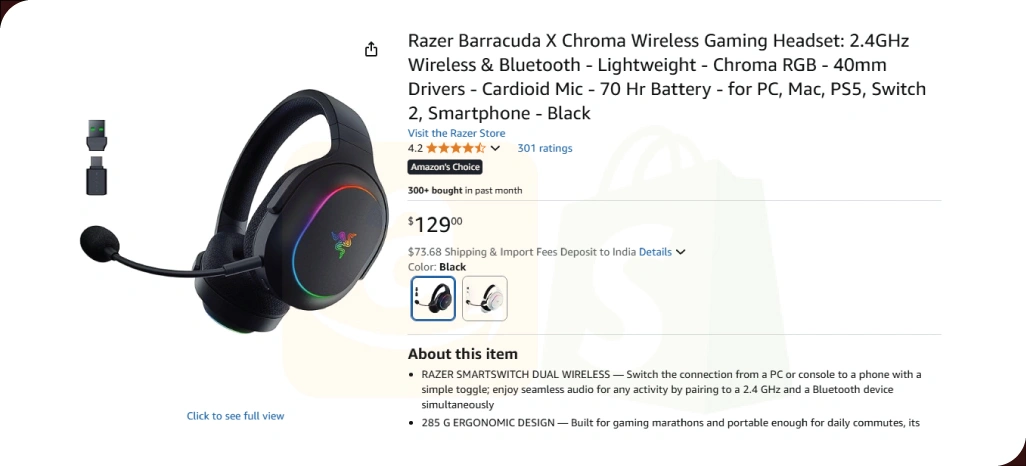
The emergence of global marketplaces and independent digital stores has increased the importance of structured comparative scraping. Businesses today rely heavily on Amazon vs Shopify Scraping to make informed decisions that directly affect growth, profitability, and customer experience. Both platforms generate massive datasets, yet each carries distinct advantages.
Amazon is known for its unmatched product variety, competitive pricing, and high consumer traffic. Scraping its data allows businesses to monitor popular product categories, analyze pricing movements, and assess customer sentiment. Shopify, on the other hand, empowers brands with flexibility and customization. By analyzing Shopify stores, businesses uncover personalized brand-building approaches, niche pricing structures, and creative catalog strategies.
Comparative insights derived from both platforms reveal untapped opportunities. For example, an item trending on Amazon may not yet have a strong presence in Shopify stores. Businesses that recognize this early can expand their offerings and capture market share. Likewise, Shopify data may highlight loyalty-driven strategies that Amazon sellers can adapt.
The most significant benefits of comparative scraping include:
- Identifying pricing gaps between mass-market and niche ecosystems.
- Tracking consumer preferences across multiple selling models.
- Aligning promotional campaigns with platform-specific demand.
- Strengthening competitive strategies with actionable intelligence.
By combining Amazon’s scale with Shopify’s individuality, businesses create balanced growth strategies that are both responsive and predictive.
Enhancing Competitive Intelligence With Cross-Platform Accuracy

Competitive intelligence has become essential for business success. Brands leveraging Ecommerce Platform Scraping Insights gain access to critical data on competitor pricing, promotions, and branding strategies. This multi-platform perspective enables decision-making that is 35% more accurate than relying on single-source information.
Amazon thrives on aggressive, volume-based competition. Sellers often rely on discounts and visibility optimization to increase sales. Shopify sellers, however, use individuality, branding, and customer loyalty to drive retention. By scraping both platforms simultaneously, businesses can compare these dynamics and refine their own positioning.
Through E-Commerce Data Intelligence, organizations can decode competitor approaches with greater precision. This involves examining patterns such as pricing fluctuations, keyword positioning, catalog placement, and promotional timing. The ability to measure these factors allows companies to anticipate competitor moves rather than react to them.
Key comparative differences include:
| Competitive Element | Amazon Marketplace Focus | Shopify Storefront Focus |
|---|---|---|
| Pricing Model | Discount-driven | Value-driven premium |
| Brand Visibility | High saturation | Custom identity-driven |
| Consumer Sentiment | Review volume-focused | Loyalty-focused |
| Catalog Structure | Standardized listings | Curated personalization |
Cross-platform intelligence ensures businesses don’t miss nuances hidden in single ecosystems. By decoding strategies holistically, brands gain predictive insights that help them plan for growth with accuracy and confidence.
Pricing Strategies Optimized With Multi-Channel Comparisons
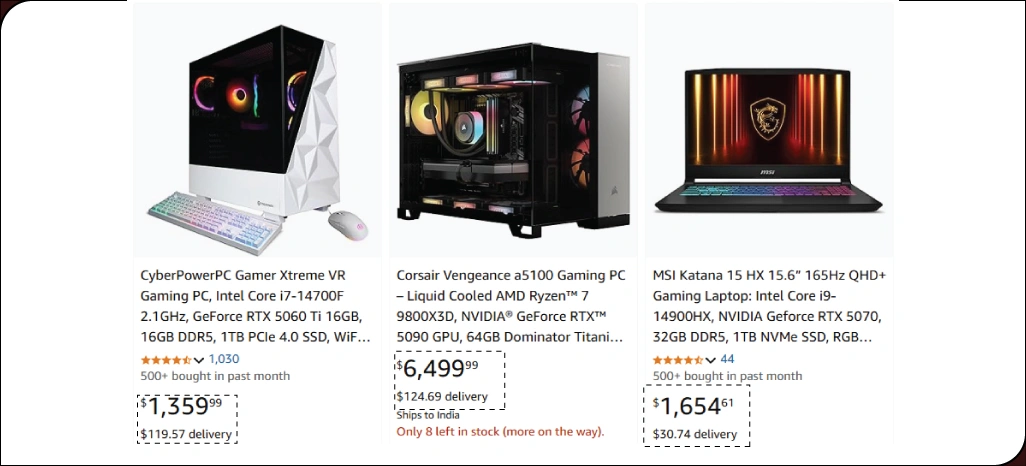
Pricing plays the most crucial role in determining profitability, and businesses that adopt Amazon vs Shopify Pricing Analysis consistently outperform competitors. This dual-layer approach provides visibility into how prices fluctuate in real-time across marketplaces and independent stores. Amazon pricing trends typically highlight aggressive discounting and volume sales, while Shopify often reflects brand authority and exclusivity.
Scraping Amazon pricing enables businesses to identify ongoing promotions, competitive discounts, and regional-specific fluctuations. Shopify data, meanwhile, highlights where consumers are willing to pay premium prices for unique branding. By integrating these datasets, companies strike the perfect balance between volume and value.
Implementing an Amazon Price Scraping Tool ensures automated monitoring, reducing manual effort while maintaining real-time visibility. This tool enables businesses to evaluate thousands of listings simultaneously, giving them actionable insights within hours rather than days.
Benefits of multi-channel pricing strategies include:
- Preventing margin losses by avoiding over-discounting.
- Identifying products suited for premium pricing models.
- Improving forecasting accuracy for seasonal demand.
- Aligning regional pricing with cultural expectations.
When dual-platform insights inform pricing strategies, brands gain a holistic advantage. The combination of Amazon’s competitive scale and Shopify’s brand-centric pricing ensures both sustainability and profitability across channels.
Product Catalog Optimization Through Comparative Scraping
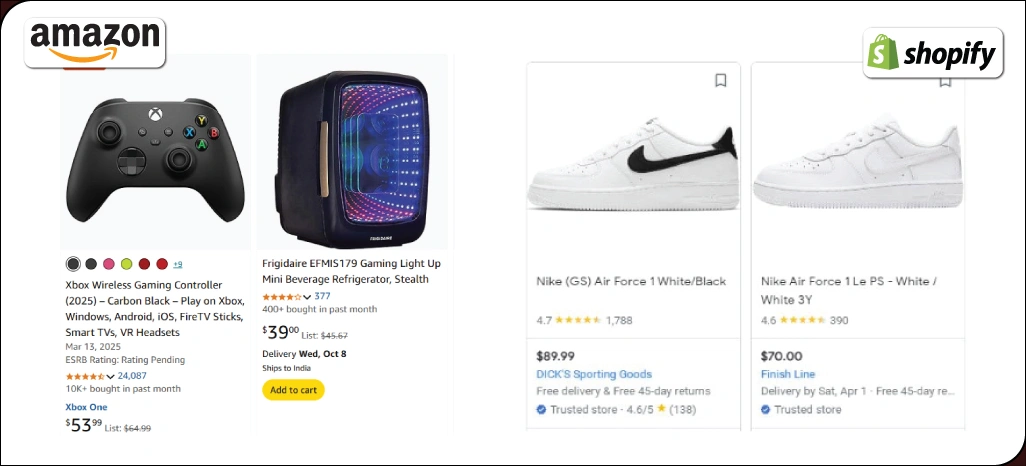
Catalog optimization is one of the most effective ways to increase product visibility and conversions. With Amazon Product Data Scraping, businesses gain insights into standardized product listings, keyword strategies, and structured descriptions. This helps companies align their listings with Amazon’s SEO-driven ecosystem.
Shopify offers more flexibility, giving sellers creative freedom in product descriptions, design, and branding. While Amazon emphasizes structure and discoverability, Shopify emphasizes storytelling and uniqueness. Both approaches can be effectively analyzed to refine catalog strategies.
Through Shopify vs Amazon Data Extraction, companies gain clarity on how to balance structured optimization with personalized branding. For example, Amazon’s keyword-optimized titles may serve as a template for Shopify descriptions that emphasize brand narrative. Similarly, Shopify’s promotional storytelling can inspire better A+ content on Amazon.
Catalog scraping benefits include:
- Improved discoverability through keyword analysis.
- Stronger engagement via storytelling-driven descriptions.
- Effective seasonal catalog adjustments.
- Enhanced brand positioning across multiple platforms.
By integrating catalog insights from both platforms, businesses ensure that their products are both searchable and memorable. This dual approach maximizes visibility while simultaneously strengthening brand identity, creating higher conversion potential across diverse customer bases.
Store-Level Intelligence for Customer Engagement Strategies
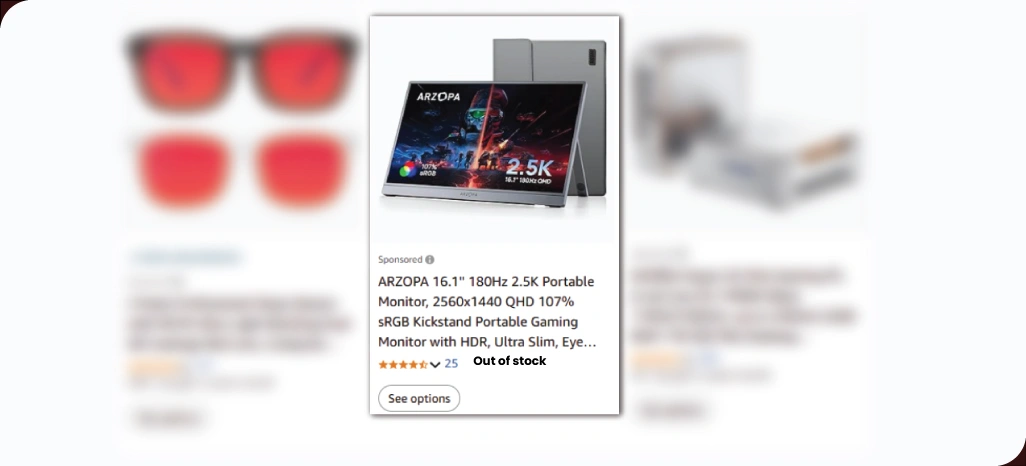
Scraping store-level data provides vital insights into customer journeys and engagement models. With Shopify Product Data Scraping, businesses assess how unique storefronts structure navigation, optimize checkout flows, and encourage loyalty. Shopify data reflects individuality, allowing companies to understand how personalization directly impacts retention.
On Amazon, sellers operate within fixed frameworks that prioritize discoverability and volume. While this provides scale, it limits customization. Shopify’s flexibility enables a deeper analysis of how branding influences purchasing decisions. For example, a Shopify store with premium branding may succeed in customer retention despite higher prices—insights that Amazon scraping alone cannot reveal.
Using Shopify Product Catalog Scraping, businesses can monitor:
- Cross-selling and upselling strategies.
- Seasonal store-level adjustments.
- Impact of design elements on engagement.
- Integration of reviews into product storytelling.
Together, Amazon and Shopify scraping provide a comprehensive view of customer behavior. Amazon data highlights bulk purchasing and competitive patterns, while Shopify reveals the value of personalized interactions. Combining both ensures businesses design strategies that balance mass-market scale with individual customer engagement, leading to stronger long-term growth.
Smarter Analytics Built With Unified E-Commerce Datasets
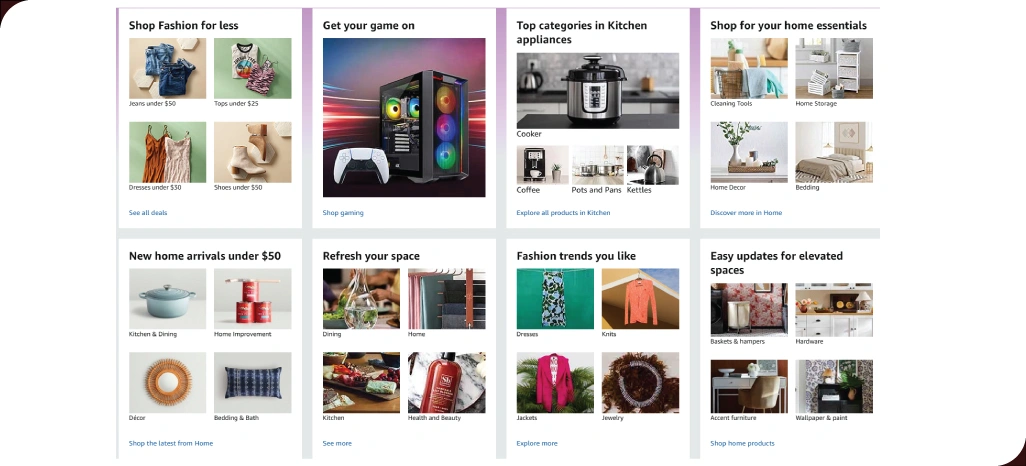
Analytics become most effective when they integrate multiple sources into a single framework. By building a unified E-Commerce Dataset, businesses gain more insightful information that drives measurable outcomes. Amazon highlights large-scale competitive trends, while Shopify emphasizes niche-focused branding. Together, these data points provide clarity that no single platform can offer.
A structured dataset ensures that businesses compare like-for-like metrics across both ecosystems. Amazon is scraping tracks, tracking pricing movements, implementing high-volume promotions, and optimizing keyword-driven catalog positioning. Shopify scraping highlights customer journeys, personalized branding, and loyalty-driven growth.
Tools like Amazon Marketplace Data Scraper provide scale, while solutions to Scrape Shopify Product Data enable store-level insights. Combined, they create a holistic view for analytics.
Benefits of unified analytics include:
- Accurate forecasting for multi-channel performance.
- Better alignment between promotional and seasonal strategies.
- Improved consumer sentiment analysis across platforms.
- Actionable benchmarks for regional and global growth.
Ultimately, merging datasets enables businesses to refine their predictive models and mitigate risk more effectively. By integrating both Amazon’s scale-driven insights and Shopify’s personalization-driven data, companies achieve clarity that supports long-term sustainability and measurable transformation.
How Retail Scrape Can Help You?
We specialize in Amazon vs Shopify Scraping strategies that deliver measurable accuracy and growth for businesses. By combining structured scraping with advanced analytics, we empower brands to track competitors, optimize pricing, and improve catalog visibility across both ecosystems.
Our tailored scraping solutions include:
- Comprehensive data collection from Amazon and Shopify.
- Real-time monitoring of price movements.
- Catalog optimization insights for better discoverability.
- Store-level performance tracking.
- Competitor benchmarking across regions.
- Unified dataset integration for more intelligent analytics.
With these services, brands achieve greater clarity and precision in decision-making, enabling them to outperform competitors. Whether your focus is scaling sales through Amazon’s vast marketplace or refining personalization strategies on Shopify, we equip you with actionable insights.
Our experts also provide solutions to Scrape Shopify Online Store Prices, ensuring accuracy in competitive intelligence while maintaining operational efficiency. By choosing us, your business gains the power of reliable scraping tailored for measurable growth.
Conclusion
Businesses navigating today’s digital ecosystem require actionable insights for long-term success. With Amazon vs Shopify Scraping, brands achieve clarity across two of the most powerful e-commerce ecosystems. This strategy ensures smarter decisions, greater efficiency, and sustainable growth.
By applying tools like a Scrape Shopify Competitor Prices solution, businesses strengthen their competitive edge. We provide the expertise and technology needed to transform fragmented data into powerful strategies that deliver results.
Start transforming your e-commerce strategies with Retail Scrape today—partner with us for accuracy-driven insights that fuel measurable growth.


